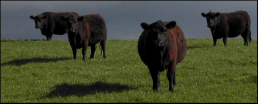History
Lowlines were developed by the researchers of the NSW Department of Agriculture from registered Angus cattle at Trangie in NSW. The NSW herd was established in 1929. In 1963 Trangie began to concentrate on performance recording. From 1974 the Angus herd was divided by size to separate out what were called Lowline and Highline cattle. Lowline and Highline herds were closed. After 15 yrs it had been demonstrated that both lines were equally efficient in converting feed to beef. However, the compact Lowline had become a stabilized breed about 30% smaller than standard Angus Cattle. In 1992 the herd was sold to the public as a new breed called Australian Lowline Cattle. These cattle are generally referred to as Lowlines, less commonly as Lowline Angus or Angus Lowline.
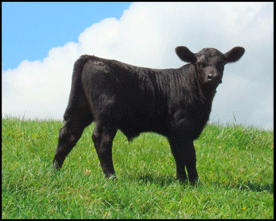
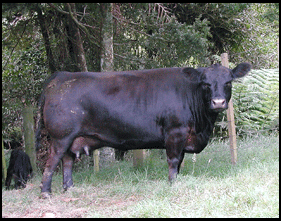
Lowline cattle are naturally polled (no horns), black, docile, and most importantly, do not carry the Achondoplasia (dwarf) gene. They are about 60% of the size of an average beef animal. At birth they weight 15-25 kg. Cattle height is measured at the rump and is approximately 105-115 cm for a cow and 110-120 cm for bulls. They are easier to handle, easier on fences and easier on pasture then larger cattle.
Lowlines produce more beef per hectare than larger cattle. Butchers report a higher yield percentage (up to 76%) from the carcase due to lower bone content. There is also a higher percentage of the better cuts (eye muscle) as a proportion of the meat produced. The beef is fine grained and tender due to the smaller size and well marbled. Lowline and Lowline-cross cattle have recently been winning carcase competitions in Australia in both their lightweight and heavyweight sections.
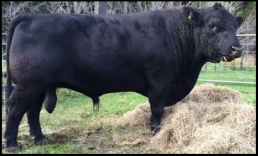
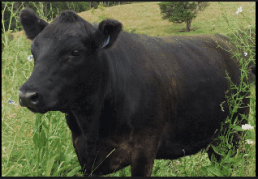
Lowline cattle cannot be ‘bred up’ like most other cattle breeds. Only Lowlines which have been DNA tested can be registered with ALCA (the Australian Lowline Cattle Association). If the written proof of the DNA test is not available when you purchase a Lowline, it may not be a purebred animal. Anyone wanting to own registered Lowline cattle or have the registration transferred to their name when they purchase them, must become a member of ALCA. In New Zealand North and South Island Promotion Groups meet regularly and all ALCA members are welcome. We also invite anyone planning to buy Lowlines and considering becoming a member.
